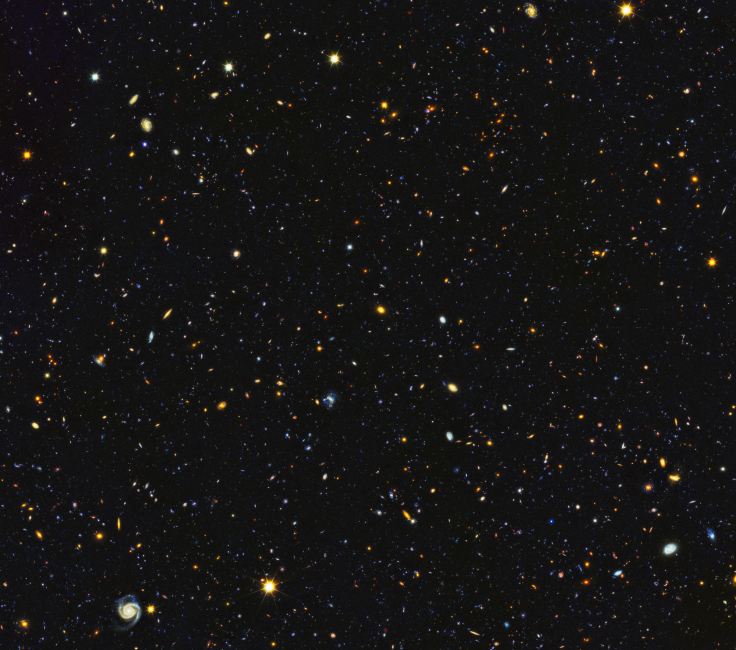Hubble Captures 15,000 Galaxies In A Single Image, Largest Of Its Kind

Our universe, which came to be more than 13 billion years ago, is so big that it is difficult to appreciate its true scale. It is still expanding at a rapid pace, forming new stars and galaxies, but just recently, NASA released a photograph giving us a reminder of how puny we are in the ever-evolving virtual universe.
The image, captured by Hubble Space Telescope, shows nearly 15,000 galaxies — different types such as spiral or elliptical — in a patch of GOODS-North field located in the northern constellation Ursa Major.
All these stellar neighborhoods, as the agency described, are widely distributed across space and time, and nearly 80 percent of them (12,000 approx.) are engaged in active star formation.
The expansive galactic portrait was produced by combining Hubble’s ultraviolet observations with infrared and visible light images from its own as well as other ground-based telescopes.
Light from distant space objects, be it a galaxy or star, can take millions or even billions of years to reach telescopes on Earth. Meaning, the objects we are seeing right now are actually what or how they appeared several billion years ago. In other words, the farther we see, the deeper we can look back in time and explore galaxies, stars, and black holes from different phases of the universe’s life.
While light from galaxies can be observed in a broad range of the spectrum, the distant ones or those forming soon after the birth of the universe emit ultraviolet light due to intense star-formation. This light later shifts to infrared due to several eons’ worth of universe’s expansion. The infrared light is detected, but UV light is filtered by Earth’s atmosphere.
Scientists have long known about this change and now, thanks to Hubble’s latest portrait, we have the UV observation of star-formation from early days of the universe. The image captures star formation in both distant and closer galaxies, allowing astronomers to compare today’s star formation with that of the ancient universe.
This, according to NASA, not just gives a rare opportunity to track the evolution of the universe over last 11 billion years to the busiest star-forming period of the cosmos – some 3 billion years after the Big Bang – but also provides a better understanding of how small clumps of ancient hot stars grew into the closer galaxies we see today.
The latest mosaic is one of the most comprehensive portraits depicting the universe’s evolutionary history. In fact, it covers 14 times more area than the phenomenal Hubble Ultraviolet Ultra Deep Field did in 2014.
Hubble Space Telescope is a joint space observatory managed by NASA and the European Space Agency (ESA). It has been operating in low-Earth orbit since 1990, giving astronomers across the globe more insight into distant galaxies, stars, and planets in the universe, along with some breathtaking images.
© Copyright IBTimes 2024. All rights reserved.




















